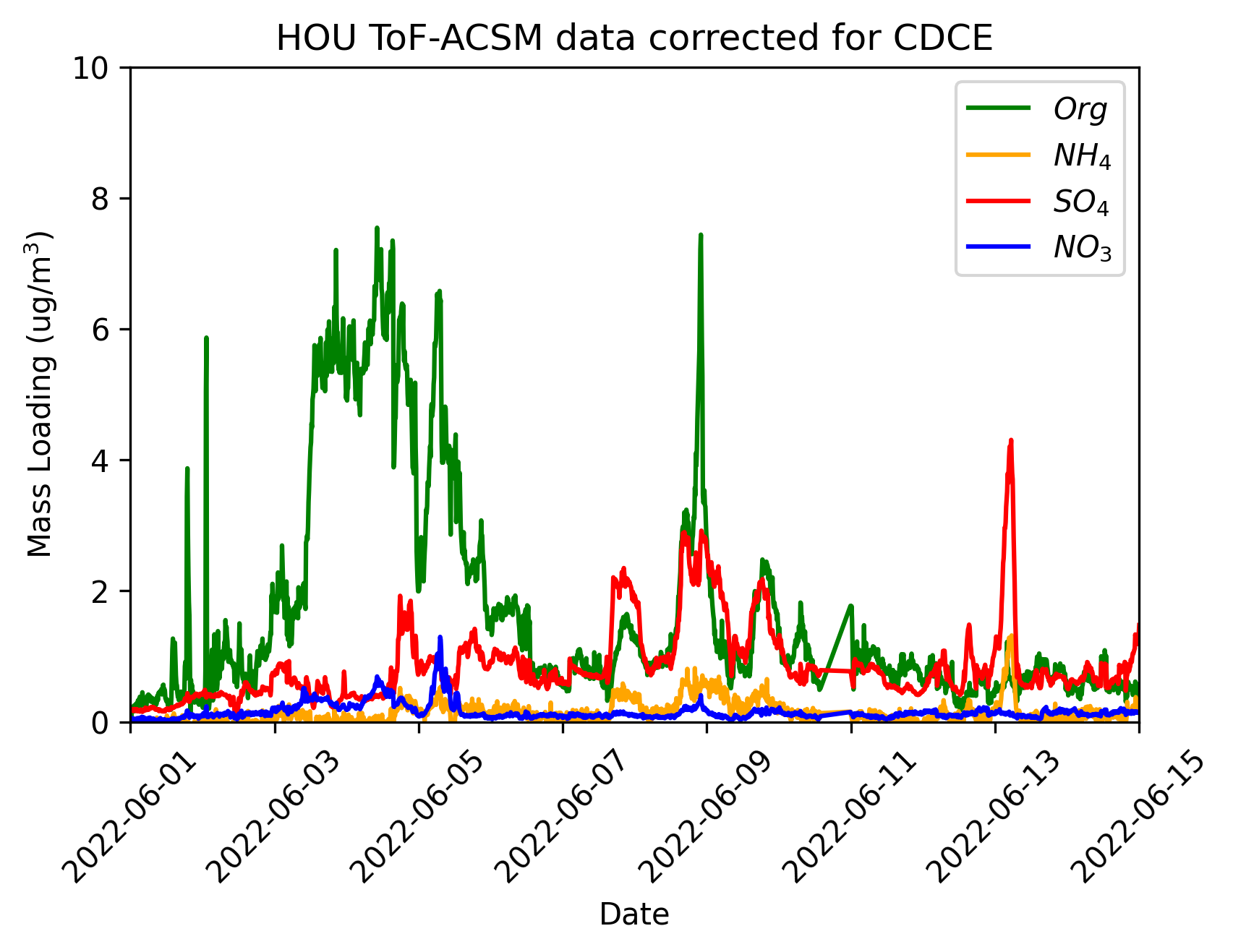New Aerosol Chemical Speciation Monitor Data Product Now Available
Published: 24 February 2023

A new data product from the Atmospheric Radiation Measurement (ARM) user facility corrects time-of-flight aerosol chemical speciation monitor (ToF-ACSM) data for non-unity particle detection.
The ToF-ACSM provides a quantitative measurement of aerosol particle chemical composition for nonrefractory aerosol components. One well-known limitation to the accuracy of the ToF-ACSM data is in evaluating the fraction of sampled aerosol particles that the instrument detects. This quantity is referred to as the collection efficiency.
Often, scientists will assume collection efficiency equals 0.5 for ambient particles collected during field campaigns. However, parameterizations have been developed that express collection efficiency as a function of the measured chemical composition, referred to as the composition-dependent collection efficiency (CDCE).
The new ACSMTOFCDCE product applies one such parameterization, developed by Middlebrook et al. (2012), to the ToF-ACSM data. Applying this parameterization improves the accuracy of the data and brings it into better agreement with other co-located aerosol measurements.
The new product is available from June 1 to September 16, 2022, for the TRacking Aerosol Convection interactions ExpeRiment (TRACER) near Houston, Texas. Also, data are available from May 13 to September 16, 2022, for the Surface Atmosphere Integrated Field Laboratory (SAIL) campaign currently being conducted near Crested Butte, Colorado.
Scientists can begin using ToF-ACSM aerosol particle concentration data corrected for CDCE. In the future, data will be available in near-real time for sites where ToF-ACSM data are available.
To learn more about the new data product, go to the ACSMCDCE web page.
Please contact ARM translator John Shilling or VAP developer Maxwell Levin to ask questions, report data problems, or provide feedback to help improve this product.
Access the data in the ARM Data Center. (Go here to create an account to download the data.)
Data can be referenced as doi:10.5439/1878136.
Reference: Middlebrook AM, R Bahreini, JL Jimenez, and MR Canagaratna. 2012. “Evaluation of Composition-Dependent Collection Efficiencies for the Aerodyne Aerosol Mass Spectrometer using Field Data.” Aerosol Science and Technology, 46(3):258-271, https://doi.org/10.1080/02786826.2011.620041.
Keep up with the Atmospheric Observer
Updates on ARM news, events, and opportunities delivered to your inbox
ARM User Profile
ARM welcomes users from all institutions and nations. A free ARM user account is needed to access ARM data.


















